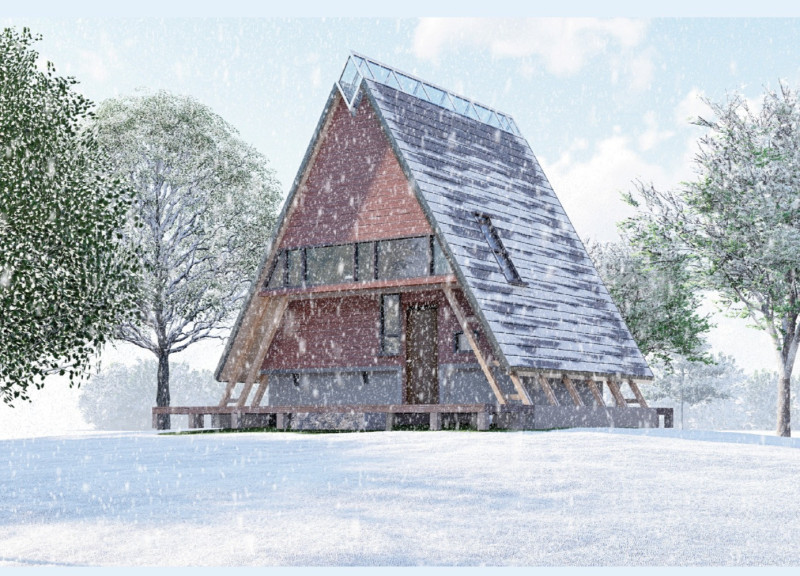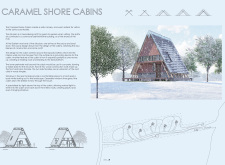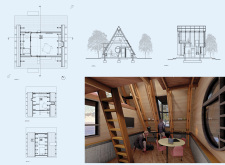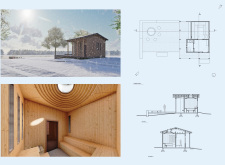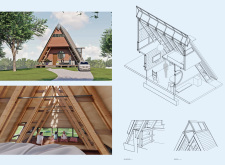5 key facts about this project
The Caramel Shore Cabins project is located in the Latvian countryside, a setting that enhances its purpose as a retreat focused on safety, comfort, and community. The design emphasizes a connection between the landscape and the built environment. Visitors are encouraged to explore their surroundings while enjoying the warmth and welcoming nature of the cabins.
Site Layout and Connectivity
Guests are guided through the site by winding pathways, which lead to essential communal areas, including an administrative building and a boat dock near a sauna. This thoughtful arrangement promotes interaction among visitors as they navigate the space. The pathways invite exploration and create a sense of community, allowing guests to connect with both each other and the natural beauty around them.
Interior Design and Spatial Progression
Inside the cabins, a focus on vertical space creates a feeling of openness. Exposed rafters run along the walls, offering structural support while enhancing the aesthetic appearance. The design features upward movement, leading to spaces such as a reading nook that provides a comfortable spot to relax. This progression within the layout optimizes the experience of each cabin, making them inviting and functional.
Material Choices and Aesthetics
Material selection is important in the overall design of the cabins. The lower perimeter wall is made of concrete, which forms a sturdy foundation for the structure. Above this, wooden elements are used in the front and back façades, adding warmth to the overall design. The side façades are covered in wood shingles, maintaining a cohesive look that aligns with the natural environment and adds to the visual interest of the cabins.
Light and Ventilation Strategies
Natural light and airflow are thoughtfully integrated throughout the cabins. Large windows in the rear façades provide scenic views and create a bright, inviting space for activities such as reading. Operable windows throughout the cabins allow fresh air to flow, promoting comfort. Skylights enhance the interior by letting in additional daylight, creating patterns of light and shadow that change throughout the day. This attention to light and ventilation enriches the living experience, grounding the cabins firmly in their natural context.


